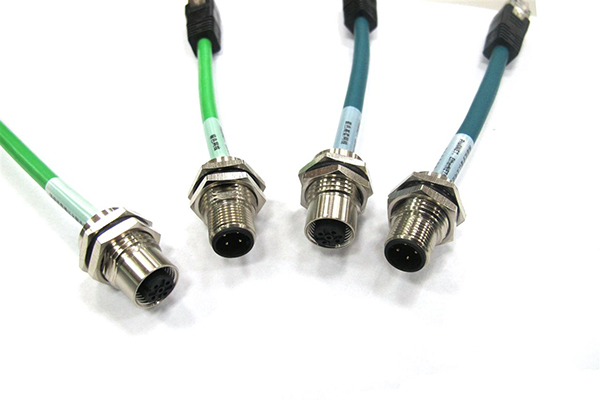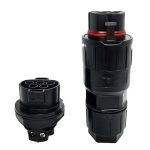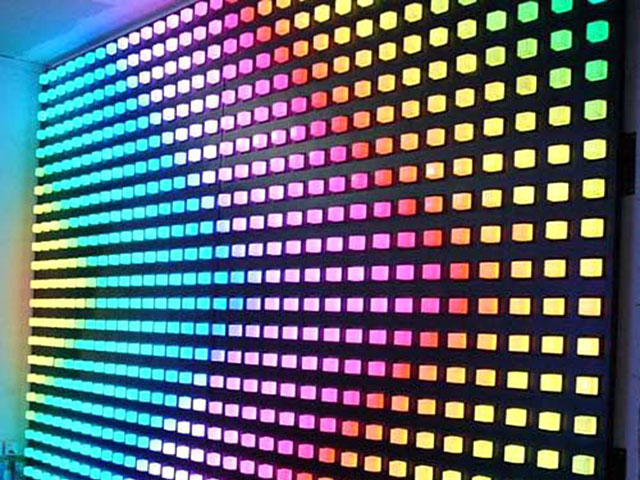In the world of industrial automation and networking, reliable and robust connectivity is crucial. Ethernet has become the standard for communication in industrial settings, and one of the key components in this ecosystem is the M12 Ethernet connector. In this guide, we will explore the features, applications, and benefits of the M12 Ethernet connector and compare it to the commonly used RJ45 connector.
What is an M12 Ethernet Connector?
The M12 Ethernet connector is a circular connector widely used in industrial environments to establish Ethernet connections. It derives its name from its 12mm diameter. Originally designed for sensor and actuator connections, the M12 connector has evolved to support Ethernet protocols, making it ideal for harsh industrial conditions that require reliable and rugged connectivity.
M12 Connection Systems for Industrial Ethernet:
M12 connection systems have become the go-to choice for establishing Ethernet connections in industrial environments. These systems offer several benefits that make them well-suited for demanding industrial applications. Let’s delve into some key aspects of M12 connection systems for Industrial Ethernet.
Robust Construction and Environmental Resistance:
One of the primary advantages of M12 connection systems is their robust construction, which enables them to withstand harsh industrial conditions. The connectors are designed to be resistant to extreme temperatures, vibrations, moisture, dust, and oils. This level of environmental resistance ensures reliable performance even in rugged settings such as manufacturing plants, transportation systems, and outdoor installations.
Coding Variants for Different Applications:
M12 connectors are available in different coding variants, each serving specific application requirements. The coding variants determine the pin configuration and help prevent misconnections between devices. The most common coding variants are A-coded, B-coded, D-coded, and X-coded.
A-coded connectors are used for sensors and actuators. They typically have two to five pins and are primarily employed in factory automation and industrial control systems.
B-coded connectors are designed for Industrial Ethernet applications and typically have four or five pins. They are commonly used for connecting Ethernet switches, PLCs, and other networking devices in industrial environments.
D-coded connectors are suitable for fieldbus applications such as PROFIBUS and DeviceNet. They usually have four or five pins and are used for connecting field devices to industrial networks.
X-coded connectors are the latest addition to the M12 family. They are designed for high-speed data transmission, supporting Ethernet protocols like 10 Gigabit Ethernet. X-coded connectors typically have eight pins and are ideal for applications with demanding bandwidth requirements.
Compatibility with Industrial Ethernet Protocols:
M12 connection systems are compatible with various Industrial Ethernet protocols, including Ethernet/IP, PROFINET, and EtherCAT. This compatibility ensures seamless integration of devices within an industrial network, allowing for efficient data exchange and communication. Whether it’s connecting sensors, actuators, or high-speed data devices, the M12 connector can accommodate a wide range of Industrial Ethernet applications.
Shielding Options:
To ensure reliable data transmission and minimize electromagnetic interference (EMI), M12 connection systems offer different shielding options. Shielded M12 cables provide enhanced protection against EMI and are commonly used in environments with high electrical noise or where data integrity is critical.
Ease of Installation and Maintenance:
M12 connection systems are designed for easy installation and maintenance. The connectors feature a simple push-pull locking mechanism that ensures secure connections and quick mating and unmating of devices. Additionally, M12 connectors often have color-coded or keyway options to prevent incorrect connections, reducing the chances of errors during installation or maintenance procedures.
The M12 to RJ45 Cable:
To bridge the gap between the M12 connector and the RJ45 interface commonly found on Ethernet devices, M12 to RJ45 cables are used. These cables feature an M12 connector on one end and an RJ45 connector on the other, allowing connectivity between M12-enabled devices and standard Ethernet equipment. They are often used to connect industrial Ethernet switches, PLCs, and other network devices to sensors, actuators, or machines in industrial environments.
Differences Between M12 and RJ45 Connectors:
While both the M12 and RJ45 connectors serve Ethernet connectivity purposes, there are notable differences between them. The primary differences include:
Design and Form Factor: The M12 connector is a circular, threaded connector with a robust construction, making it suitable for harsh industrial environments. In contrast, the RJ45 connector is a rectangular, modular connector commonly found in office and home networking environments.
Environmental Resistance: M12 connectors are designed to withstand extreme temperatures, vibration, and exposure to moisture, dust, and oils. On the other hand, RJ45 connectors are not as rugged and are better suited for controlled office or indoor environments.
Connector Pin Configuration: M12 connectors typically have 3, 4, 5, or 8 pins connector, depending on the specific variant, while RJ45 connectors always have 8 pins. The pin configuration of M12 connectors can vary depending on the coding standard used.
Is RJ45 Outdated?
While the M12 connector offers several advantages in industrial environments, it does not render the RJ45 connector obsolete. RJ45 connectors are still widely used in office networks, data centers, and home networking applications. They are cost-effective, readily available, and compatible with a vast array of Ethernet devices. However, in harsh industrial environments where ruggedness and reliability are paramount, the M12 connector provides superior performance and longevity.
Conclusion:
The M12 Ethernet connector has emerged as a reliable and durable solution for Ethernet connectivity in industrial environments. Its robust design, environmental resistance, and compatibility with various Ethernet standards make it a preferred choice for industrial networking applications. While the RJ45 connector remains prevalent in office and home networks, the M12 connector fills the gap for industrial applications where ruggedness and reliability are essential.
As industrial automation continues to advance, the M12 Ethernet connector will play a crucial role in ensuring seamless communication between industrial devices, enabling efficient and reliable industrial Ethernet networks.




